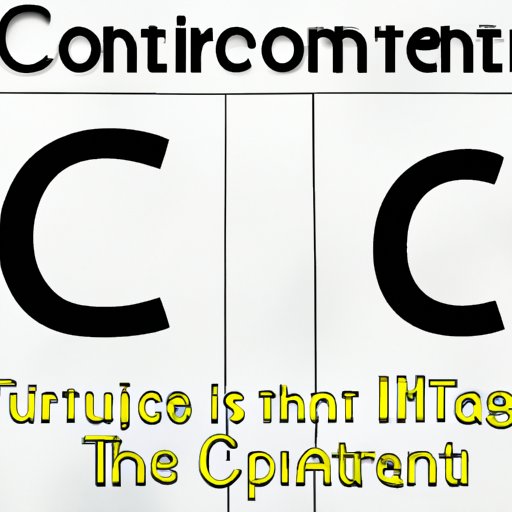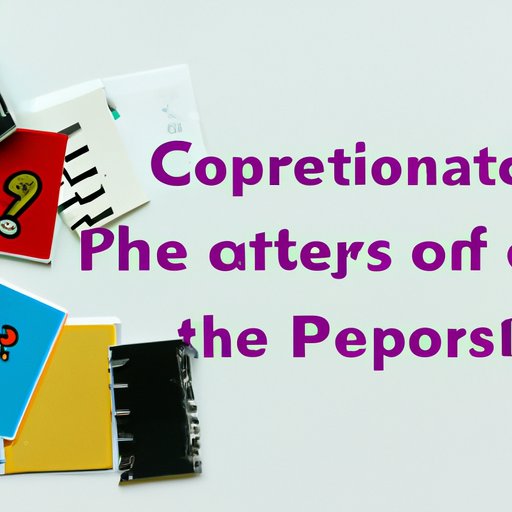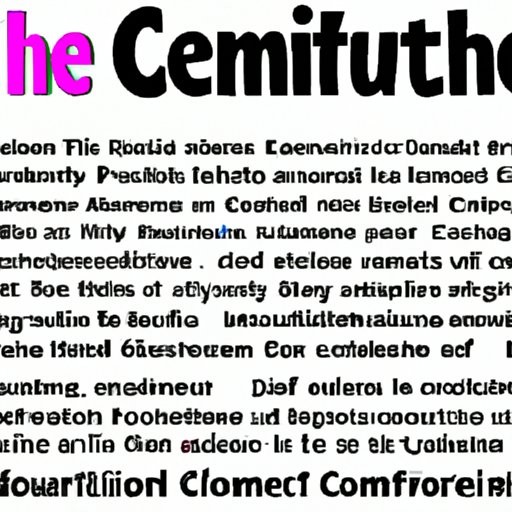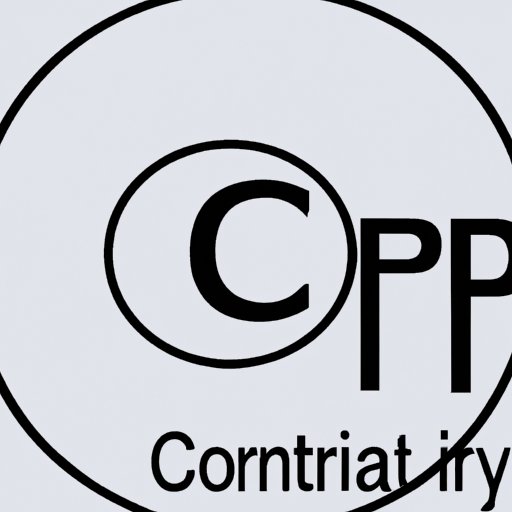Introduction
Creative Commons (CC) is a nonprofit organization that provides free legal tools to help creators, artists, and educators share their work and build upon the work of others, legally and easily. It offers a range of licenses, from full copyright to public domain, so creators can choose the option that best suits their needs.
What is Creative Commons?
Creative Commons was founded in 2001 with the goal of providing an alternative to traditional copyright, which restricts the sharing and reuse of creative works. CC licenses allow creators to give permission to others to use their work under certain conditions, without having to pay a fee or go through lengthy negotiations. This enables creators to share their work more freely and easily, while still protecting their rights as authors.
How Does Creative Commons Work?
Creative Commons provides a range of copyright licenses that allow creators to choose the level of protection they want for their work. The licenses are designed to be easy to understand and use, so creators can quickly decide which license best suits their needs. The licenses include options such as “No Derivatives” which prohibits others from making changes to the work, and “Attribution” which requires that any use of the work must be credited to the creator.
Using Creative Commons for Your Creative Projects
When creating original works of art, literature, music, or other creative projects, it’s important to understand copyright and Creative Commons. Copyright law gives creators exclusive rights to their work, including the right to control who can use it and how it can be used. Creative Commons licenses provide creators with an alternative way to share their work without giving up all of their rights.

Understanding Copyright and Creative Commons
Copyright is a form of intellectual property law that gives creators exclusive rights to their work, including the right to control who can use it and how it can be used. Copyright applies automatically when a work is created, and it lasts for the life of the creator plus 70 years. Under copyright law, creators have the exclusive right to copy, distribute, display, perform, and modify their work. This means that anyone who wants to use the work must get permission from the creator.
Creative Commons licenses provide an alternative to traditional copyright by allowing creators to give permission to others to use their work under certain conditions, without having to pay a fee or go through lengthy negotiations. These licenses are designed to be easy to understand and use, so creators can quickly decide which license best suits their needs.
Selecting the Appropriate Creative Commons License
When selecting a Creative Commons license, creators should consider the type of work they are creating, how they want it to be used, and what restrictions they want to place on its use. For example, if a creator wants to ensure that their work is attributed to them, they would select a license with an attribution clause. If they want to prohibit others from modifying their work, they would select a license with a no derivatives clause.
The six main Creative Commons licenses are Attribution (CC BY), Attribution-ShareAlike (CC BY-SA), Attribution-NoDerivs (CC BY-ND), Attribution-NonCommercial (CC BY-NC), Attribution-NonCommercial-ShareAlike (CC BY-NC-SA), and Attribution-NonCommercial-NoDerivs (CC BY-NC-ND). Each license has its own set of conditions, so creators should read the license carefully before selecting one.

Making the Most Out of Creative Commons Licensing
Once a creator has selected the appropriate Creative Commons license for their work, they should make sure that the license is clearly visible on their website or other online platforms where their work is shared. This will help others understand the terms of the license and give credit where it’s due. In addition, creators should consider adding a link to the Creative Commons Deed page, which contains a human-readable summary of the license.
Creators should also take advantage of the Creative Commons logo, which is a recognizable symbol that helps others identify works that are available under a Creative Commons license. The logo can be used on websites, social media posts, and other digital platforms to let people know that the work is available for use under a Creative Commons license.

The Benefits of Using Creative Commons Licenses
Using Creative Commons licenses can have a number of benefits for creators. Here are just a few of the advantages of using Creative Commons licenses for your creative projects.
Increased Visibility and Exposure
By using a Creative Commons license, creators can make their work available for others to use and share. This increases the visibility and exposure of their work and can lead to more opportunities for collaboration, recognition, and financial gain. According to a study of over 400 million images published by Creative Commons, the use of CC licenses was associated with increased visibility, downloads, and attributions.
Protecting Your Intellectual Property Rights
Creative Commons licenses give creators control over how their work is used and shared. This helps protect their intellectual property rights and ensures that they receive proper credit for their work. By using a Creative Commons license, creators can make sure that their work is not misused or appropriated without their permission.
Enhancing Collaboration and Innovation
By making their work available under a Creative Commons license, creators can foster collaboration and innovation. This allows others to build on their work and create new works, leading to greater creativity and potential breakthroughs. According to a survey conducted by Creative Commons, nearly 90% of respondents said that Creative Commons licenses had enabled them to collaborate with others and produce innovative works.
Creative Commons: A Guide for Artists and Creators
Creative Commons licenses can be a great tool for artists and creators looking to share their work with the world. Here are some tips for getting started with Creative Commons.
Exploring Different Types of Creative Commons Licenses
Creative Commons provides a range of licenses, from full copyright to public domain. Before deciding which license to use, creators should read the descriptions of each license and consider their goals for sharing their work. Once they have chosen the appropriate license, they should make sure that the license is clearly visible on their website or other online platforms where their work is shared.
Understanding Your Rights as a Creator
It’s important for creators to understand their rights under copyright law and Creative Commons. Knowing their rights will help them protect their work and make sure that they receive proper credit for it. They should also familiarize themselves with the different types of Creative Commons licenses and make sure that they select the one that best meets their needs.
Finding Creative Commons Content
Creative Commons makes it easy to find content that is licensed under Creative Commons licenses. There are several websites, such as Flickr and Open Clip Art Library, that specialize in Creative Commons content. Additionally, many search engines offer the ability to search for Creative Commons content. This makes it easy for creators to find content that is available for use under a Creative Commons license.
Conclusion
Creative Commons is a great tool for artists and creators looking to share their work with the world. It provides an alternative to traditional copyright, allowing creators to give permission to others to use their work under certain conditions, without having to pay a fee or go through lengthy negotiations. Creative Commons licenses provide creators with control over how their work is used, while also increasing visibility and exposure. By understanding copyright and Creative Commons, creators can make the most out of Creative Commons licensing.
Summary of Creative Commons
Creative Commons is a nonprofit organization that provides free legal tools to help creators, artists, and educators share their work and build upon the work of others, legally and easily. It offers a range of licenses, from full copyright to public domain, so creators can choose the option that best suits their needs. By using Creative Commons licenses, creators can increase visibility and exposure, protect their intellectual property rights, and enhance collaboration and innovation.
Final Thoughts on Creative Commons
Creative Commons is a powerful tool for creators looking to share their work with the world. By understanding copyright and Creative Commons, creators can make the most out of Creative Commons licensing and benefit from the increased visibility and exposure that comes with it. With Creative Commons, creators can share their work more freely and easily, while still protecting their rights as authors.
(Note: Is this article not meeting your expectations? Do you have knowledge or insights to share? Unlock new opportunities and expand your reach by joining our authors team. Click Registration to join us and share your expertise with our readers.)
